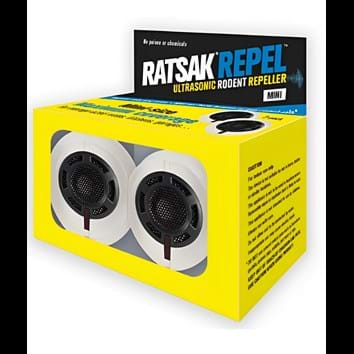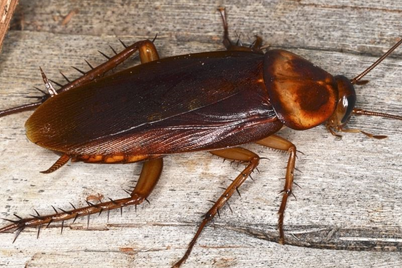The basic needs for rodent survival and reproduction are food, water, shelter and warmth. Rodents seek out areas that supply and fulfil these needs, and what better place than in and around human houses.
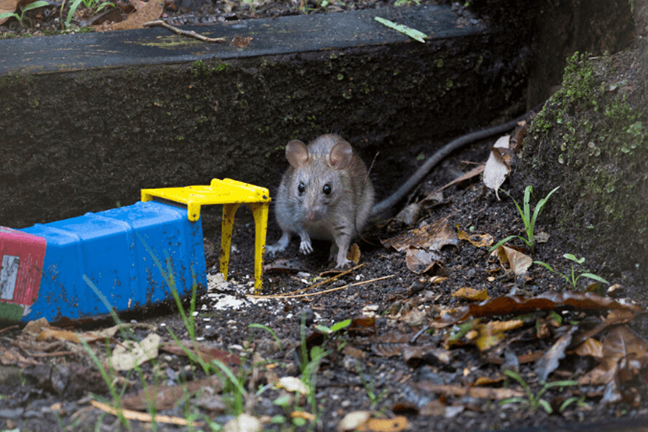
Where do Rats & Mice Enter the House?
Rodents can get into the house through very small spaces as they can get in anywhere their head can fit through. Rats and mice enter the house via:
- Doors: Under the door, through open doors, holes in flyscreen doors and gaps around door frames.
- Window: through open windows, windows not fitted with flyscreens, holes in flyscreens and gaps around window frames.
- Floors: through holes and gaps in flooring and skirting boards.
- Walls and ceilings: through holes and gaps.
- Roof vents, air vents, skylights and chimneys.
- Holes and gaps in cladding, bricks, roofing and ceilings.
- Around plumbing and gas lines.
Checklist
- Determine if it is a rodent (see section 'What are Rats and Mice & how to get rid of them').
- Check where rodents may be entering the home (see section above 'Where do Rats and Mice enter the house?').
- Walk around your home and garden to determine the cause of the problem (see section 'How to Prevent Rats and Mice Appearing').
- Check for signs of rodents in the home (see section 'Symptoms of Rats and Mice Damage').
- To ensure current rodent infestation is quickly and effectively controlled, see sections 'Best Treatment for Rats and Mice' and 'How to Prevent Rats and Mice Appearing'.

Where are Rats & Mice Found Around the House?
Rats & Mice in the Kitchen
The kitchen is a prime place for rodents to find food and water. Rodents can get into the kitchen through small spaces such as beneath the sink cabinet (especially around water pipes), under the fridge and stove. Rodents can also get in through open doors and windows; holes in the flyscreen; gaps in window and door frames; gaps in flooring, walls and skirting boards; air vents and exhaust fans; and gaps around skylights. Rodents can also contaminate food and transmit disease which is of real concern in food preparation areas.
Food in the kitchen can be found in the fruit bowl, bread basket and food in unsealed containers such as cereal and other packaged foodstuff. Food scraps can be found left on unwashed plates, in the rubbish and from uncleaned cooking appliances such as the sandwich press. Crumbs can be found left on the bench; in or near the toaster; and fallen underneath appliances such as the fridge, oven and dishwasher.
Water can be found left in the sink; dripped onto benches and the floor; from leaky taps; and the refrigerator drip pan.
Checklist
In the kitchen, look for droppings (faeces) in spaces beneath the sink cabinet; in cupboards and pantry; on benches; in and on the sink; under and behind the fridge, including the drip pan; and inside and under the stove. The presence of rat and mouse droppings is one of the best indications of a rodent problem. Other signs of rodent activity include dead rats, urine stains, rodent hairs, nests, odour, gnawing, tracks, rub marks, and sounds (see section 'Symptoms of Rats and Mice damage' for further information).
- Repair holes, cracks and gaps in walls, skirting boards, skylights, window frames and door frames.
- Before using any kitchenware, as rodents can contaminate food and transmit disease, wash items before use and hygienically wipe down benches before preparing food.
- Remove food sources in the kitchen:
- Regularly wipe down benches, vacuum floors and clean underneath and behind appliances.
- Clean appliances such as the toaster and sandwich press shortly after each use.
- Wash up glassware, crockery, cutlery, kitchen utensils, cookware regularly, especially before leaving the house during the day and before going to bed of a night.
- Store all food which is not inside the fridge in sealed containers, this includes human and pet food. For food in cardboard boxes or plastic bags, such as bread, cereal or flour, also store these in sealed containers.
- Keep fruit, vegetables and herbs either in the fridge or in a sealed container.
- Dispose of garbage regularly, especially before leaving the house during the day and before going to bed of a night.
- Rinse food waste residues out of recyclable packaging and containers.
- Remove water sources in the kitchen:
- Fix leaky water pipes and dripping faucets
- Wipe up any residual water after using the sink and any water that has dripped on to benches and the floor. Do this especially before leaving the house during the day and before going to bed of a night.
Strategies of Controlling Rats & Mice in the Kitchen
Baits
A variety of RATSAK bait products are suitable depending on the space in which you wish to use them. Follow baiting strategy instructions on your RATSAK product. Bait infested area, placing bait under cover and not in the open.
-
A great product for underneath the sink where it is moist and where food, food preparation and food storage items are unlikely to be stored, try Ratsak Rapid Strike Dual Active Wax Blocks or Ratsak Fast Action Wax Blocks.
-
To help keep baits away from children and pets, use baits in Ratsak Reusable Rodent Bait Station.
Traps
All RATSAK trap products are suitable for use in the kitchen when used safely and according to label instructions.
-
To help keep powerful traps away from children and pets try the Ratsak Trap Station.
-
For a no mess no fuss approach in the kitchen, try Ratsak Electronic Mouse Trap for mice.
-
To refresh attractant bait on traps, apply Peanut Butter or Hazelnut Spread to help lure rodents to the trap.
Repel
-
To help repel rodents away from the kitchen, try Ratsak Repel Ultrasonic Rodent Repeller Mini - emits high frequency air waves to effectively repel rodents.
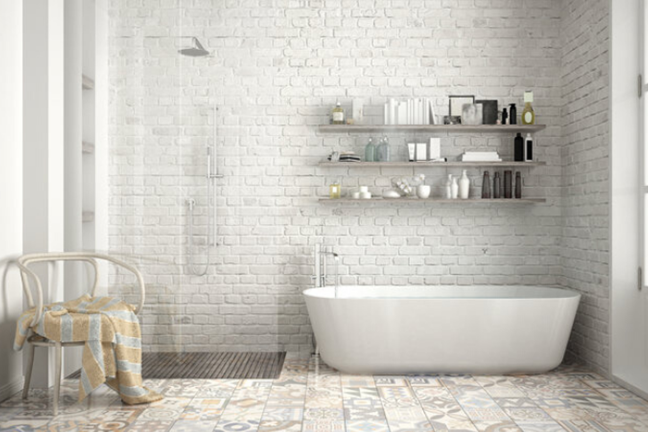
Rats & Mice in the Bathroom & Laundry
The bathroom and laundry provide water, shelter and warmth making it an ideal place for rodents. Rodents can get into the bathroom and laundry through small spaces such as beneath the sink cabinet, especially around water pipes; open doors and windows; holes in the flyscreen; gaps in window and door frames; gaps in flooring, walls and skirting boards; air vents and exhaust fans; and gaps around skylights. Some rodents have even been reported to come up through sewer and drain pipes.
Checklist
In the bathroom and laundry, look for droppings in spaces beneath the sink cabinet and in the bath or shower. The presence of rat and mouse faeces is one of the best indications of a rodent problem. Other signs of rodent activity include dead rats, urine stains, rodent hairs, nests, odour, gnawing, tracks, rub marks, and sounds (see section 'Symptoms of Rats and Mice damage' for further information).
- Remove water sources in the kitchen:
-
- Fix leaky water pipes and dripping faucets.
- Wipe up any residual water after using the sink, shower and bath; and any waer that has dripped on to the floor. Do this especially before leaving the house during the day and before going to bed of a night.
- Ensure drainage holes are fitted with a firmly secured grate.
- If possible, cover air vents and exhaust fans with mesh.
- Repair holes, cracks and gaps in walls, skirting boards, skylights, window frames and door frames
- Avoid using potpourri.
- Keep toothbrushes in plastic sealed toothbrush holders.
- Keep vulnerable products, such as individually packaged organic face masks, in plastic sealed containers.
- If using the sink for washing the face or shaving, clean prior to use.
Strategies of Controlling Rats & Mice in the Bathroom & Laundry
Baits
A variety of RATSAK bait products are suitable for use in the bathroom and laundry depending on the space in which you wish to use them. Follow baiting strategy instructions on your RATSAK product. Bait infested area, placing bait under cover and not in the open.
- For damp areas, such as the bathroom and laundry, RATSAK Wax Blocks are an excellent option. Follow baiting strategy instructions on your RATSAK product. Bait infested area, placing under cover and not in the open. Try Ratsak Rapid Strike Dual Active Wax Blocks or Ratsak Fast Action Wax Blocks.
- To help keep baits away from children and pets, use baits in Ratsak Reusable Rodent Bait Station.
Traps
All RATSAK trap products are suitable for use in the bathroom and laundry when used safely and according to label instructions.
- As these areas are often more likely to be frequented by children or pets, to help keep powerful traps away from children and pets try the Ratsak Trap Station.
- To refresh attractant bait on traps, apply Hazelnut Spread or Peanut Butter to help lure rodents to the trap.

Rats & Mice in the Garage & Shed
The garage or shed is a place where rodents are more likely to take up shelter from the cold. Rodent nests are often found in these areas as they are warm and sheltered and often not disturbed. Rodents can cause damage to items stored in these areas by chewing items such as electrical wiring and building materials.
Checklist
- In the shed or garage, signs of rodent activity include droppings, dead rats, urine stains, rodent hairs, nests, odour, gnawing, tracks, rub marks, and sounds (see section 'Symptoms of Rats and Mice damage' for further information).
- Rodents may be found nesting in fabric items such as old towels or paint drop sheets.
- Check for chewed items such as fertiliser bags, cardboard boxes and wiring.
- Store organic fertilisers, such as Blood and Bone, in plastic sealed containers.
- Do not store food, such as harvested pumpkins, in the shed or garage unless they are stored in plastic sealed containers.
- Avoid keeping cardboard boxes and loose fabric items in the garage or shed as this is often used as nesting material.
- Avoid clutter and store fabric items in sealed containers.
- Ensure garage door seals properly.
- Ensure doors are always closed. Install a door guard to the bottom of the door. Ensure gaps around door frames are sealed. Ensure flyscreen on flyscreen doors are firmly secured and maintained.
- Ensure windows are always closed and gaps around frames are sealed. Ensure window flyscreens are firmly secured and maintained.
- Seal gaps, holes and openings in the garage and shed as rats and mice can squeeze through the smallest of holes.
- Ensure bird nests have been removed from inside the roof, in the shed and garage, and in other areas such as gutters. For native birds, contact your local wildlife rescue for advice.
Strategies of Controlling Rats & Mice in the Garage & Shed
Baits
A variety of RATSAK bait products are suitable depending on the space in which you wish to use them. Follow baiting strategy instructions on your RATSAK product. Bait infested area, placing bait under cover and not in the open.
- For damp areas, such as the garage or shed, RATSAK Wax Blocks are an excellent option. Follow baiting strategy instructions on your RATSAK product. Bait infested area, placing bait under cover and not in the open. Try Ratsak Rapid Strike Dual Active Wax Blocks or Ratsak Fast Action Wax Blocks.
- As rodents poisoned by baits in the garage or shed are likely to venture and die outdoors, to eliminate the risk of secondary poisoning to dogs, cats, birds and livestock, try Ratsak Naturals Rodenticide Bait Pellets.
- To help keep baits away from children and pets, use baits in Ratsak Reusable Rodent Bait Station.
Traps
All RATSAK trap products are suitable for use in the garage and shed when used safely and according to label instructions.
- To help keep powerful traps away from children and pets try the Ratsak Trap Station.
- For a no mess no fuss approach for controlling mice in the garage or shed, try Ratsak Electronic Mouse Trap.
- To refresh attractant bait on traps, apply Hazelnut Spread or Peanut Butter to help lure rodents to the trap.
Repel
- To help repel rodents in the garage, try Ratsak Repel Ultrasonic Rodent Repeller Mini - emits high frequency air waves to effectively repel rodents and is ideal for medium and small sized garages and sheds.
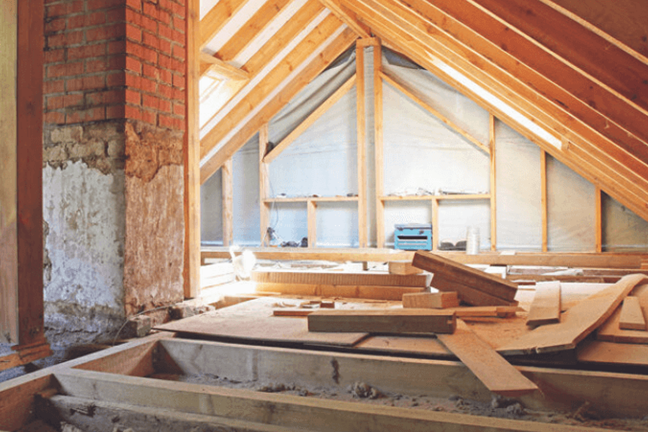
Rats & Mice Inside the Roof
Inside the roof provides a quiet, warm and sheltered position ideal for rodents to hide, sleep and nest. While in the roof, rodents can cause damage by chewing electrical wiring, pipes, timber and building materials. Rodent faeces and urine can cause foul-smelling and strong odours that emanate throughout the house.
Checklist
- If possible, visually inspect for evidence of rodents throughout the inside of the roof or at least view from the manhole.
- Listen for scratching, scurrying and chewing noises.
- Be mindful of foul-smelling and strong odours produced from faeces and urine.
- Other signs of rodent activity include droppings, dead rats, urine stains, rodent hairs, nests, odour, gnawing, tracks and rub marks (see section 'Symptoms of Rats and Mice damage' for further information).
- Ensure bird nests have been removed from inside the roof, in the shed and garage, and in other areas such as gutters. For native birds, contact your local wildlife rescue for advice.
Strategies of Controlling Rats & Mice Inside the Roof
Baits
A variety of RATSAK bait products are suitable depending on the space in which you wish to use them. Follow baiting strategy instructions on your RATSAK product. Bait infested area, placing bait under cover and not in the open.
- RATSAK Fast Action Throw Packs are an excellent option for hard to reach places such as the roof cavity or in other hard to reach places. Follow baiting strategy instructions on your RATSAK product. Place throw packs in the roof area and check baits regularly.
Traps
All RATSAK trap products are suitable for use in the roof when used safely and according to label instructions.
- To refresh attractant bait on traps, apply Hazelnut Spread or Peanut Butter to help lure rodents to the trap.
Rats & Mice Under the Floor
Under the floor provides a quiet, warm and sheltered position ideal for rodents to hide, sleep and nest. While under the floor, rodents can cause damage by chewing electrical wiring, pipes, timber and building materials. Rodent faeces and urine can cause foul-smelling and strong odours that emit throughout the house.
Checklist
- If possible, visually inspect for evidence of rodents underneath the floor.
- Listen for scratching, scurrying and chewing noises.
- Be mindful of foul-smelling and strong odours produced from faeces and urine.
- Other signs of rodent activity include droppings, dead rats, urine stains, rodent hairs, nests, odour, gnawing, tracks and rub marks (see section 'Symptoms of Rats and Mice damage' for further information).
Strategies of Controlling Rats & Mice Under the Floor
Baits
A variety of RATSAK bait products are suitable depending on the space in which you wish to use them. Follow baiting strategy instructions on your RATSAK product. Bait infested area, placing bait under cover and not in the open.
- RATSAK Fast Action Throw Packs are an excellent option for hard to reach places such as under flooring or in other hard to reach places. Follow baiting strategy instructions on your RATSAK product. Where possible, place throw packs under the floor and check baits regularly.
Traps
All RATSAK trap products are suitable for use in the roof when used safely and according to label instructions.
- To refresh attractant bait on traps, apply Hazelnut Spread or Peanut Butter to help lure rodents to the trap.






